Extravagant doesn't begin to describe the feeling. Somewhere between wildly festive and profoundly sacred, it's a feeling one can't explain to be amidst literally thousands of Thai people, smiling but mostly silent, paying respects and making merit.
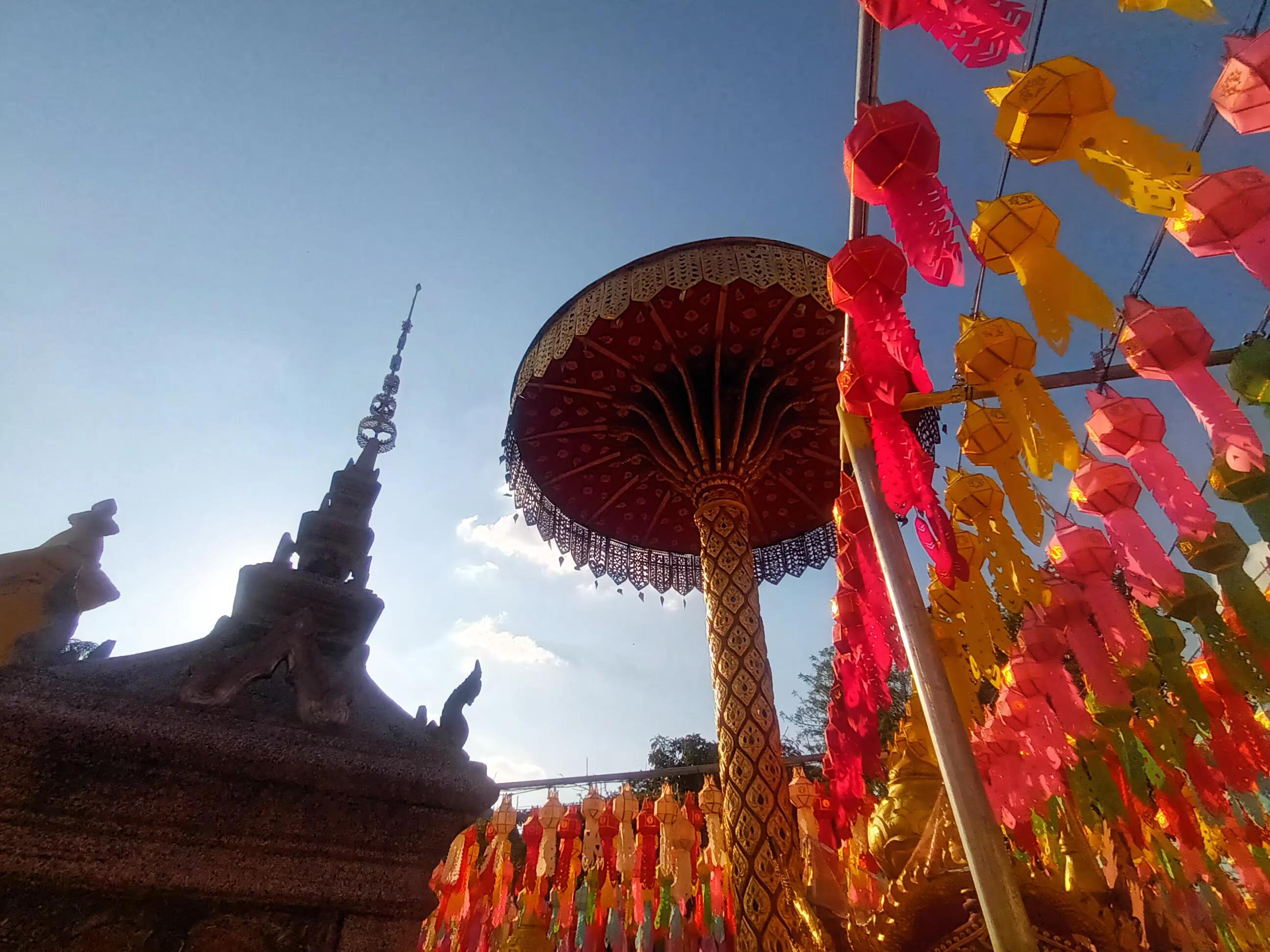
It was a quiet Saturday afternoon in the beginning of the cool season in sub-tropical northern Thailand. Clear skies and 31C / 88F. Lamphun sits about 35 mins drive from my home in Chiang Mai, and is the heart of the former Mon Kingdom of Hariphunchai.
Hariphunchai (also spelled Haribhuñjaya) was a Mon kingdom in what is now Northern Thailand, existing from the 7th or 8th to 13th century CE. Its capital was at Lamphun, which at the time was also called Haripuñjaya. In 1292 the city was besieged and captured by Mangrai of the Tai kingdom of Lan Na. Source
The temple dates back to 897 AD and is one of the temples most Thai people believe needs to be honoured and made merit at in order to complete one's current earthly karma well and move forward on the Wheel.
Wat Phra That Hariphunchai's earliest origins were in 897 when the then king of Hariphunchai is said to have built a stupa (now the central stupa) to house a hair of the Buddha. The present compound, founded by Hariphunchai King Athitayarai, dates from 1044. The temple was first rebuilt in 1443 by King Tilokaraja of Lanna kingdom Chiang Mai. The temple's pyramid-shaped Chedi Suwanna was built in 1418. In the 1930s temple renovations were made by the northern Thai monk Khru Ba Sriwichai. Source
Just 3 weeks ago Lamphun was under heavy flood and largely cut off. This image of Lamphun district a few short weeks ago gives some real context to the level of celebration felt by Thai people when the monsoonal deluges suddenly end.
The lantern festival is all about Making Merit - bringing the prayers of thanks and wishes for the coming year to the temple, which is still the heart of the community outside of the big cities and main tourist destinations. Many of the lanterns are actually inscribed with names and prayers.

The lanterns themselves are made from saa paper - a bamboo frame and hand made saa paper, which is made from the bark of the incredibly fast-growing mulberry tree. IN the heart of one of the world's big silk producing countries (where the silk worms feed on mulberry leaves), saa paper makes sense. And the lanterns are very much made in the local Lanna style.
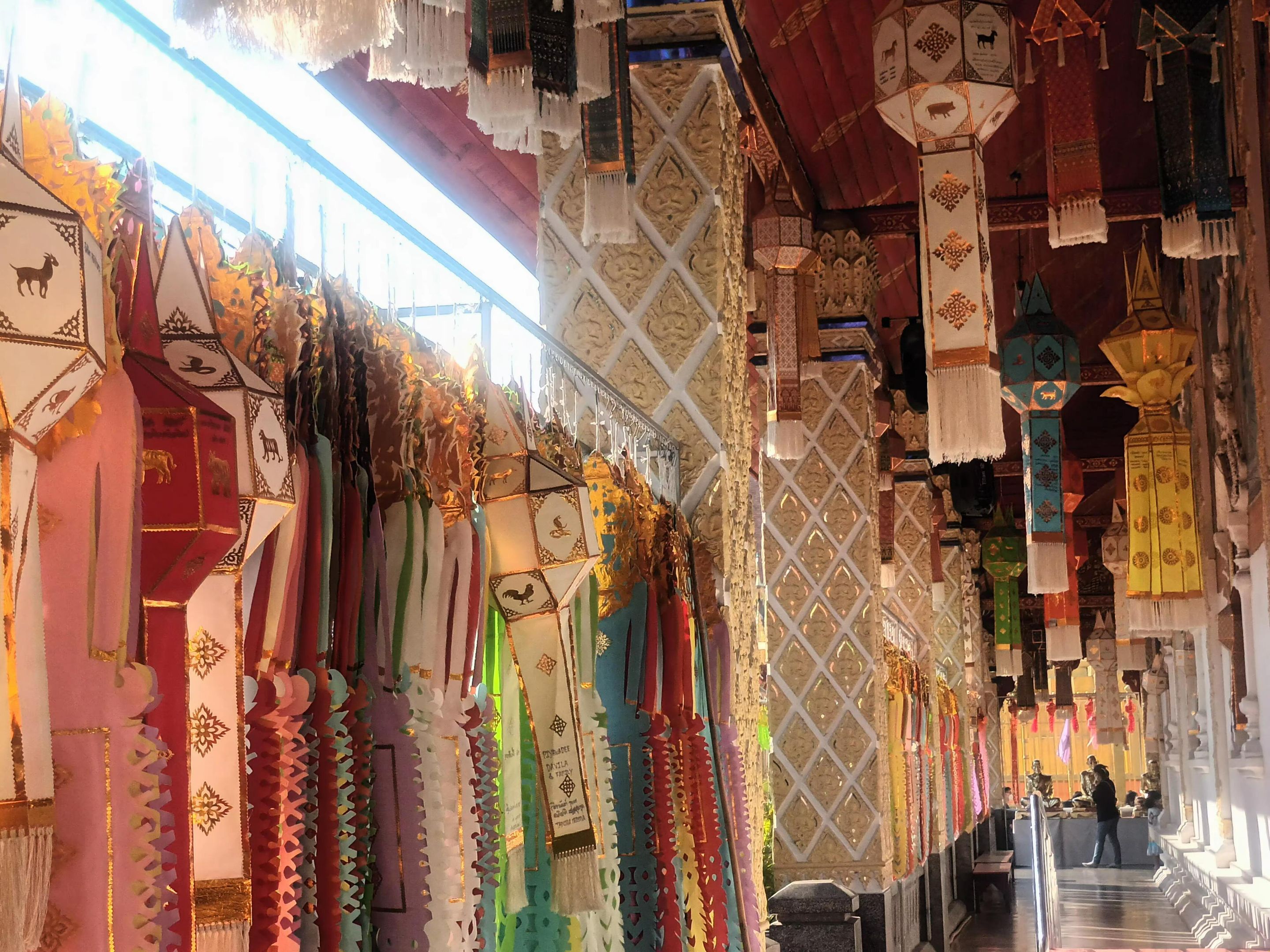
And so the offerings are brought - flower offerings, money, lanterns, new temple bells....

Families prostrate before the Buddha images, take endless photos, buy temple souvenirs to help return the merit back to their homes, and basically enjoy being together in a culture that is rock-solid about tradition.
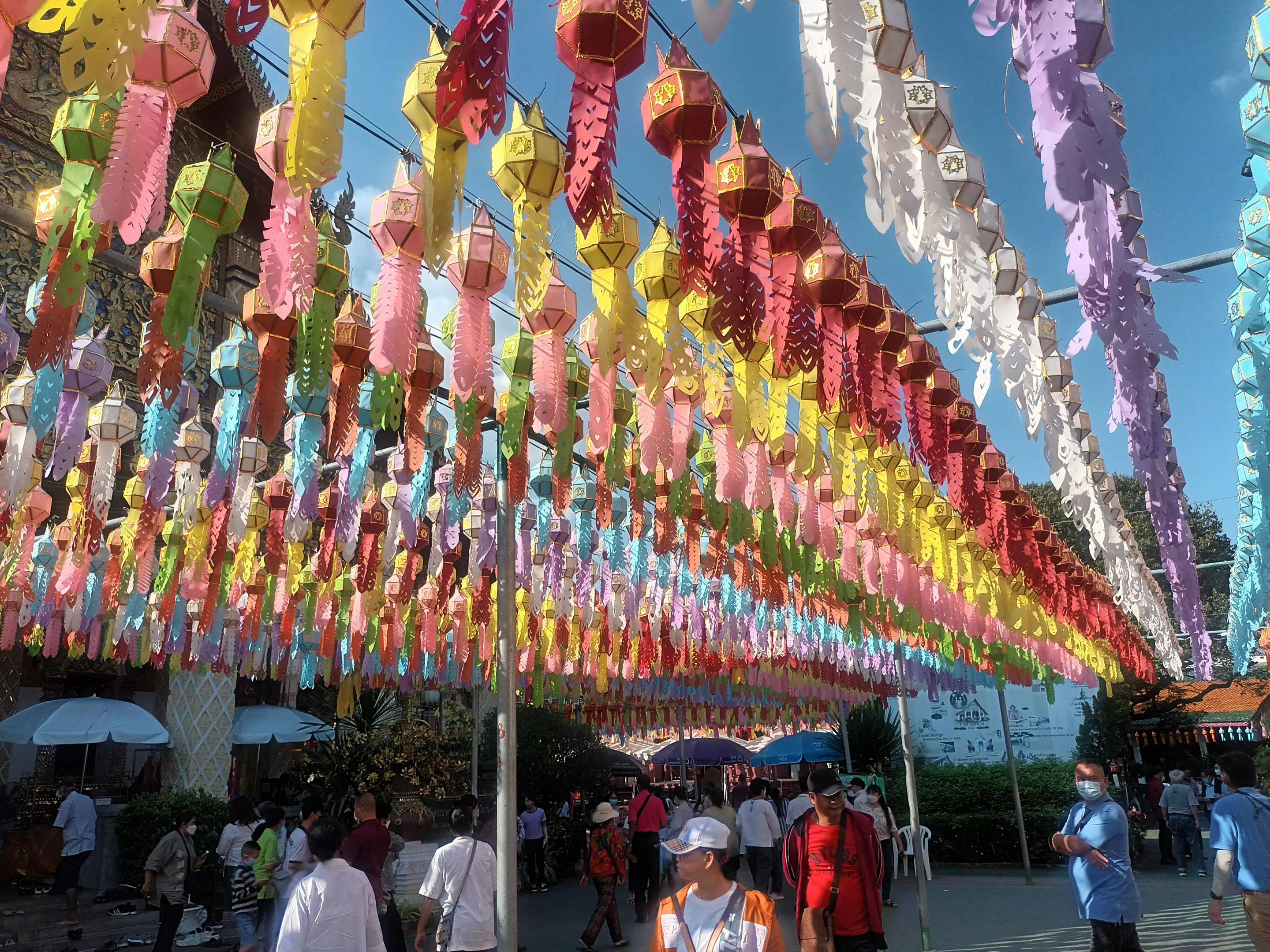
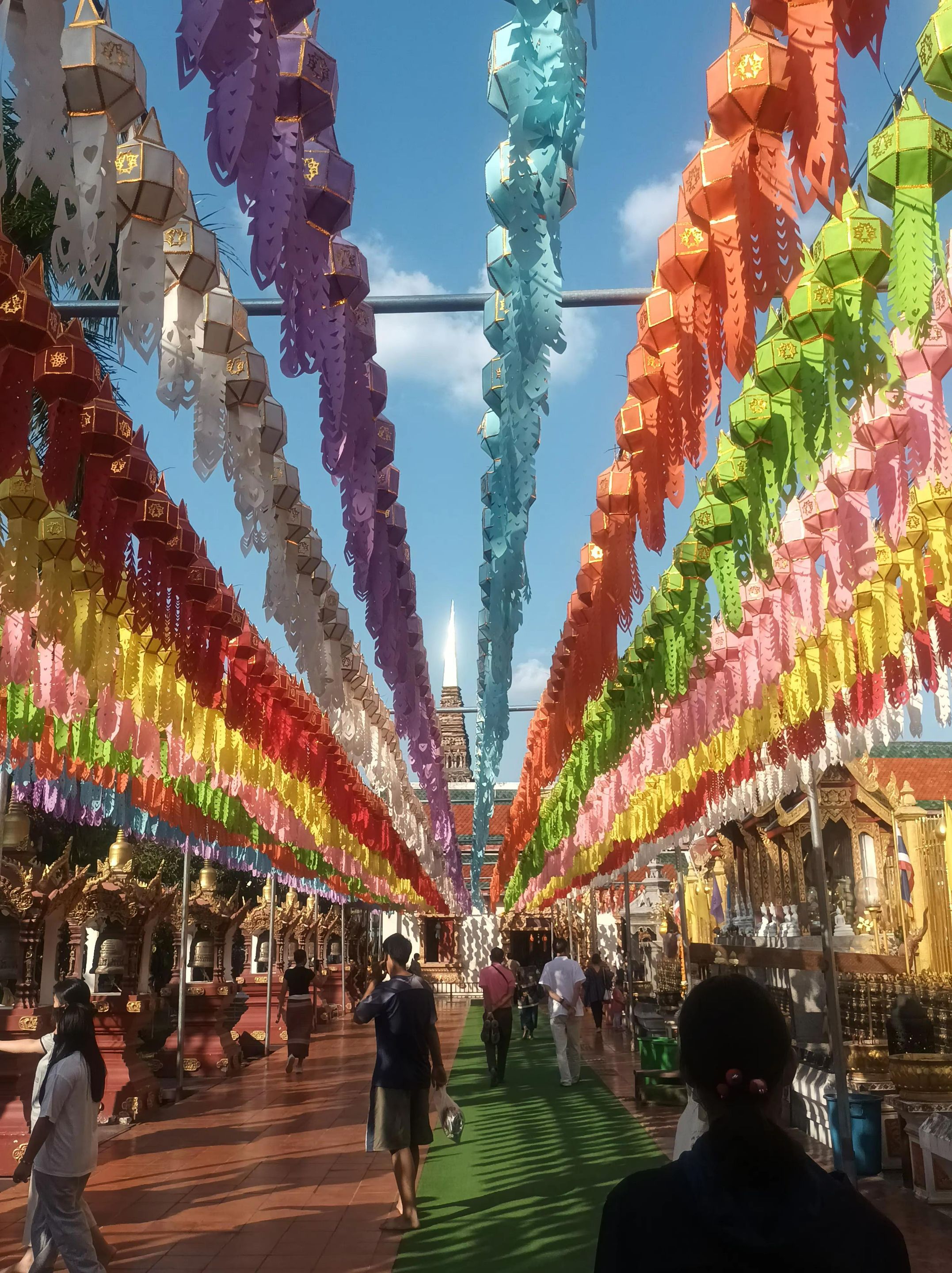
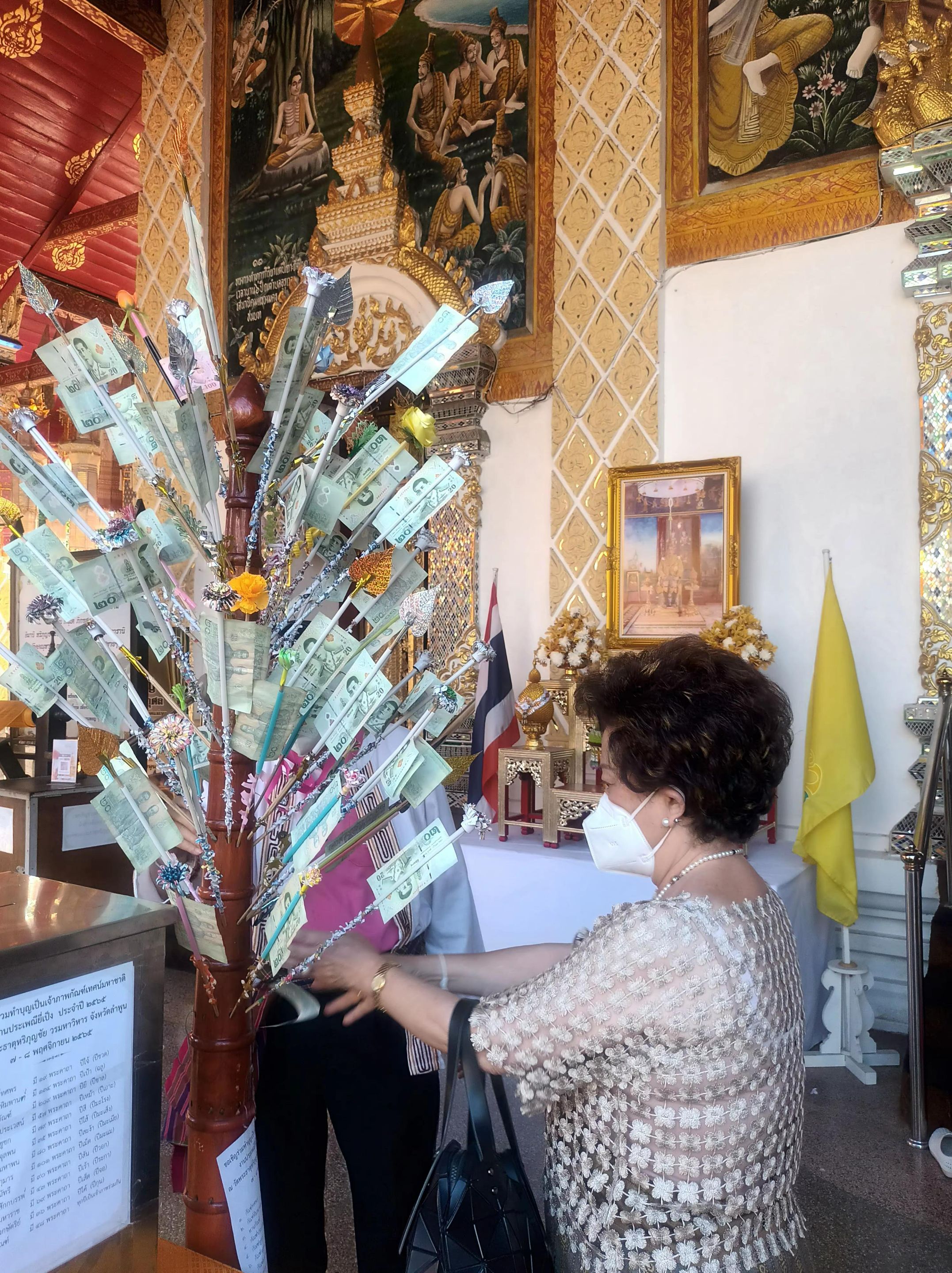
The visual drama of the spectacle is amazing. And surprisingly, I was the ONLY NON THAI that I saw in my several hours there. That's despite public transport being offered for under $1 from the Narawat Bridge in Chiang Mai via the blue songtaew.
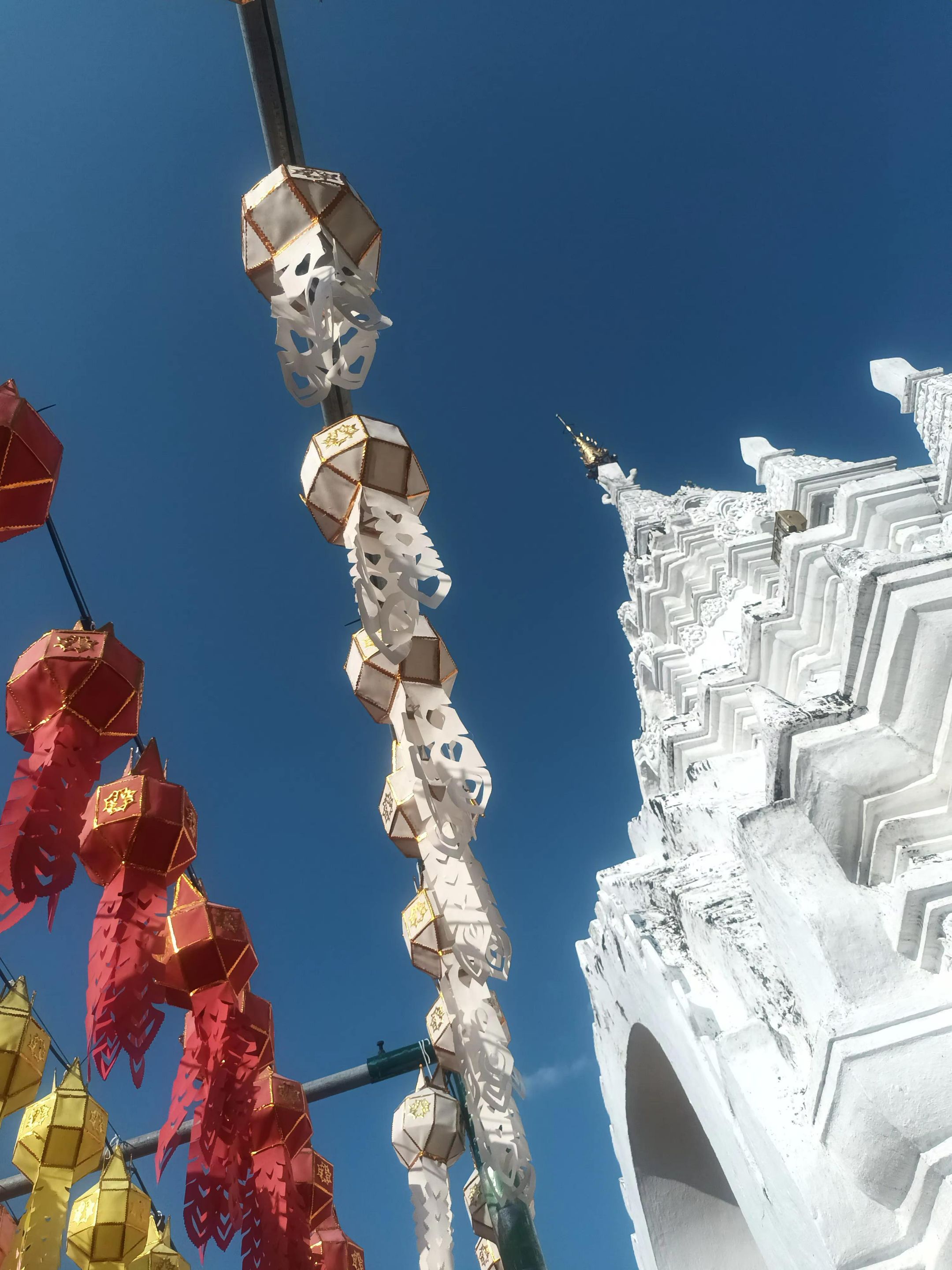
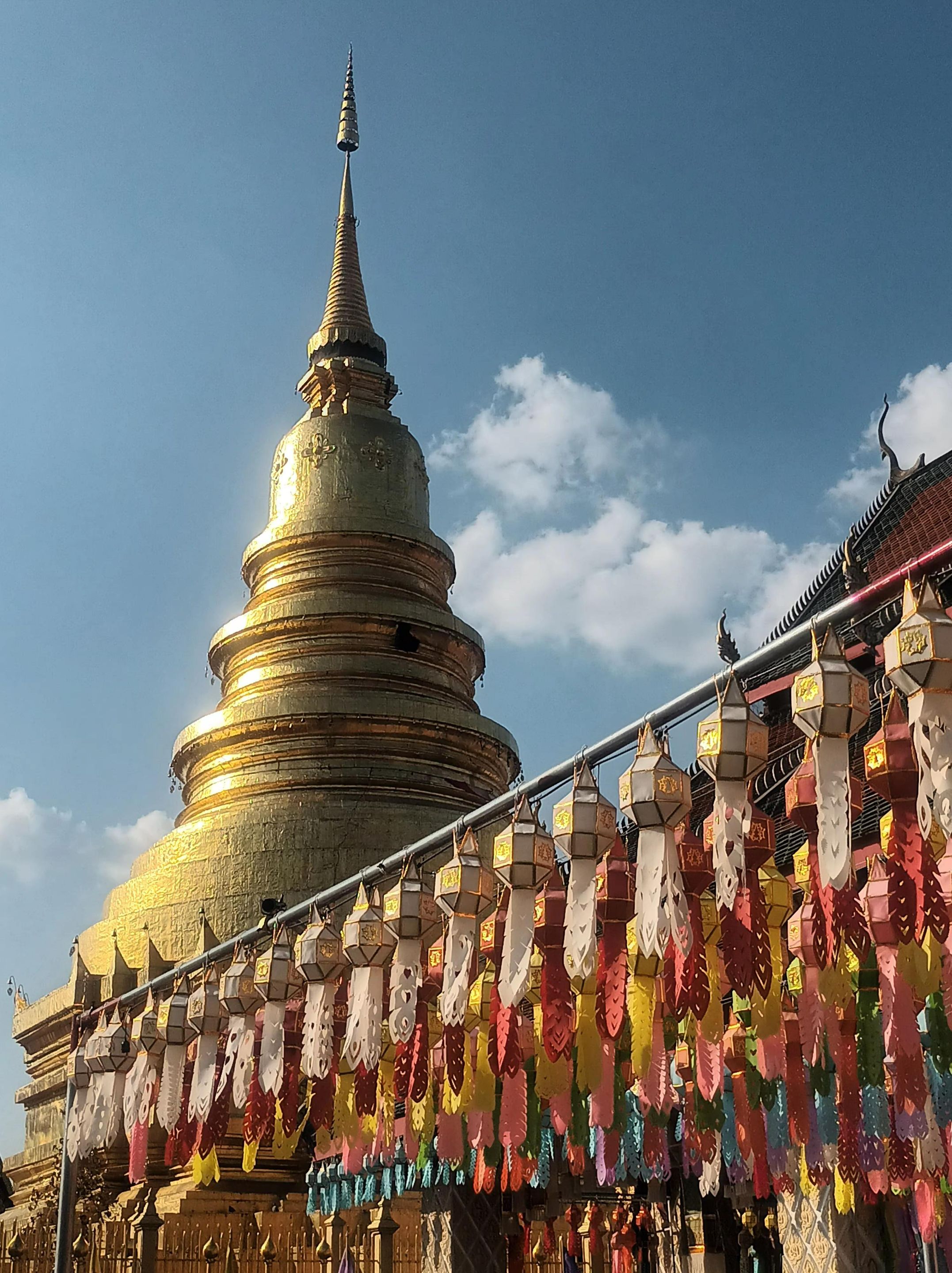
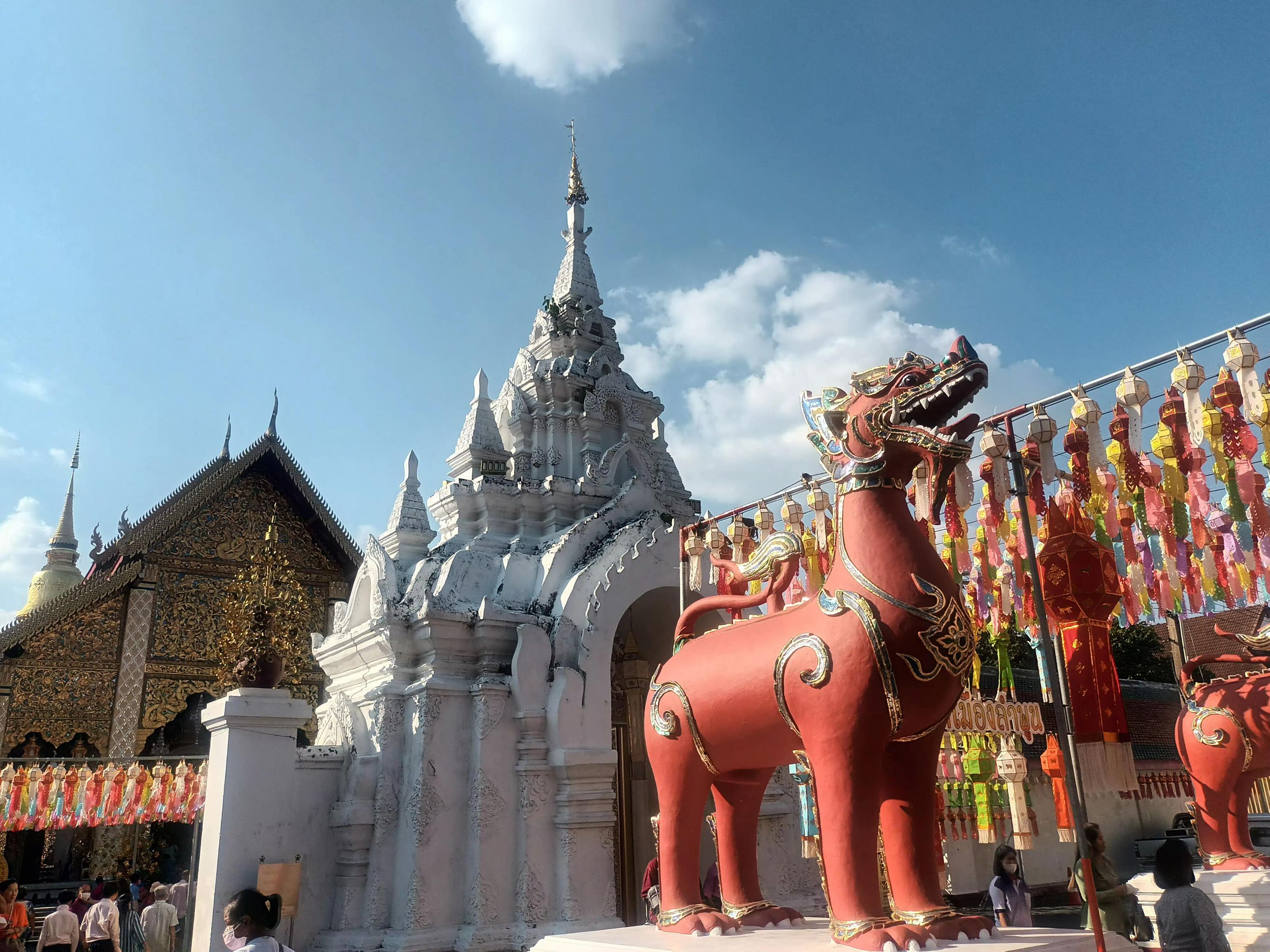
The Lantern Festival at Wat Hariphunchai is a chance to see REAL northern Thai culture, as opposed to the manufactured tourist experiences of the Yee Peng Lantern Release in Chiang Mai. Make no mistake, I'll be attending and having a blast and posting about that too 😆 but it is not even close to being as authentic at the Hariphunchai festival.
The temple site is HUGE and one can easily spend a few hours walking, pondering and simply soaking up the extraordinary vibe.
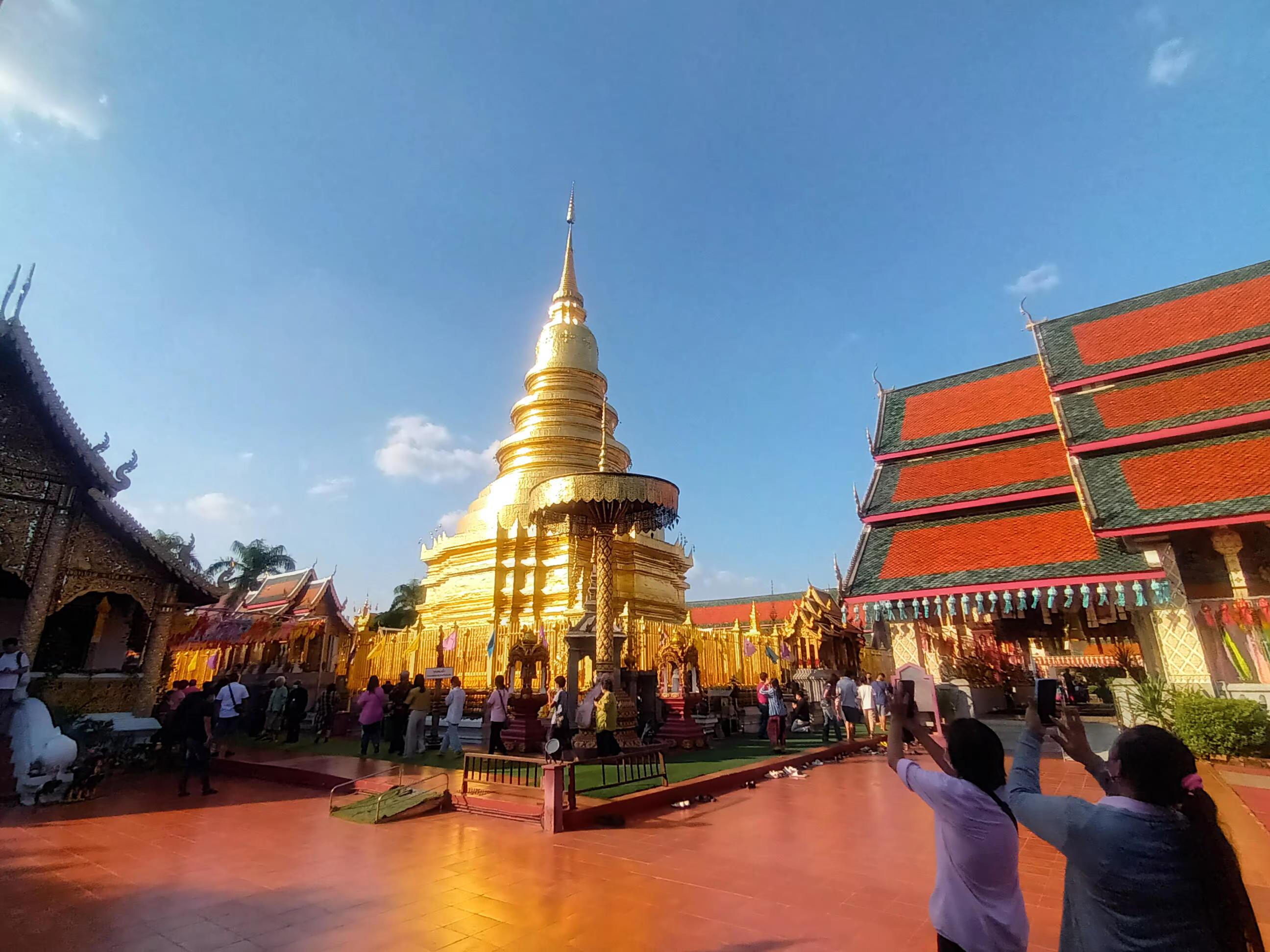
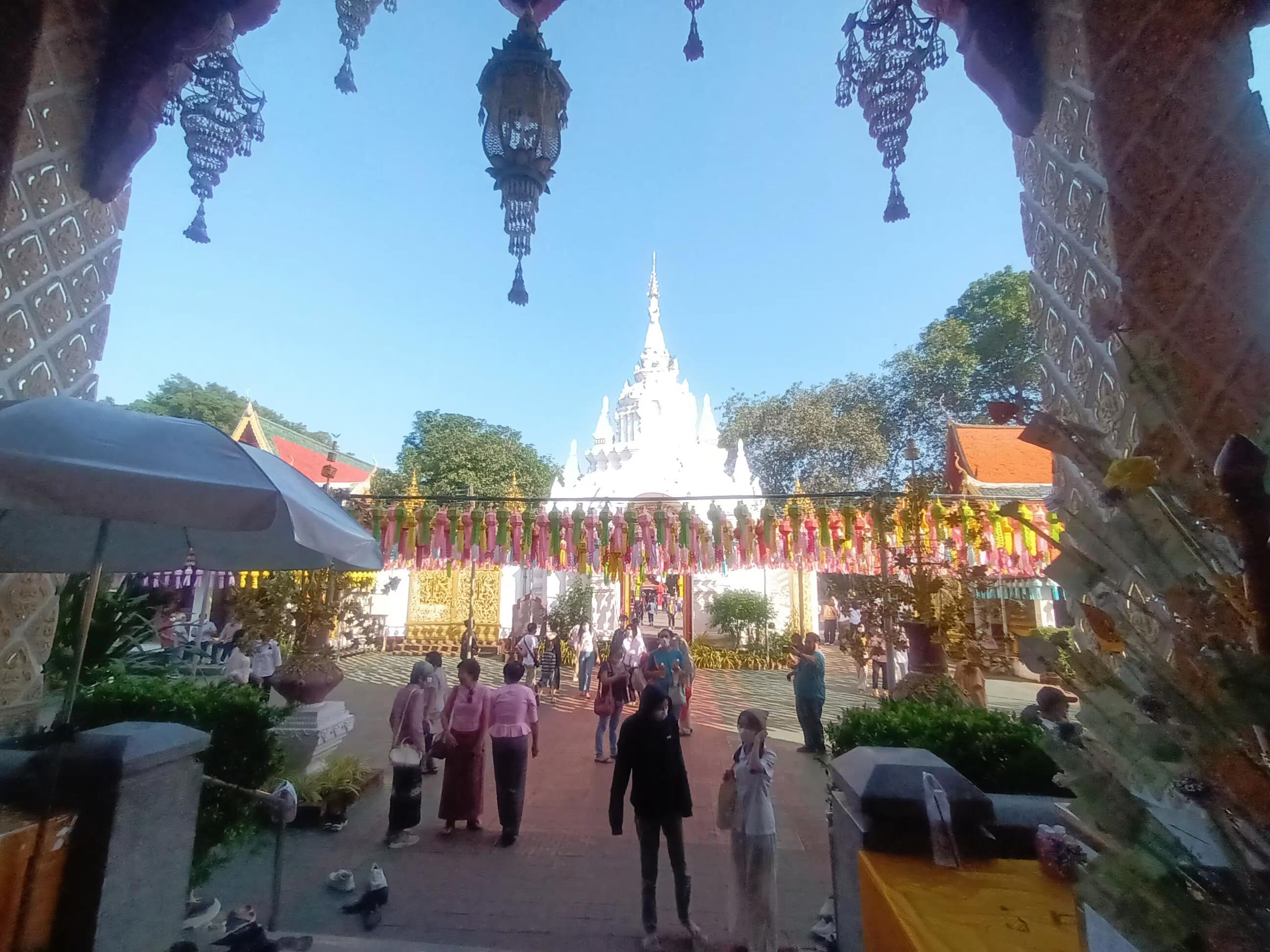

Yup, I as pretty warm after walking barefoot on the hot, polished tiles around the stupa and got a little sun, despite it being tropical "winter". I closed out a delightful afternoon with a freshly squeezed tangerine juice and a home-made coconut icecream under a Banyan tree in the temple forecourt.
What 3 words would I choose to describe the Lantern Festival at Way Hariphunchai?
Authentic, Uplifting, Traditional.



Come check out my Pure Thai Naturals online store
 **
**
Find me on Twitter: Pure Thai Naturals @BreugelMarike & @HiveLift
**
